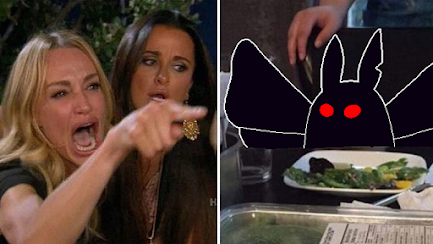Research Blog #10: Abstract and Works Cited
Presented below are my works cited and abstract: Abstract: This research paper investigates the growth of tourist locations associated with the paranormal as viable components of local tourist economies, and how this could point towards a positive feedback loop of tourists visiting the locations, spreading the word about it, and driving more people to visit. This loop fuels both the economic revenue of the locale and supernatural lore surrounding the history there. The paper examines the four main aspects of “curiosity” to frame the discussion of the paper, and applies it especially to the Mothman Festival and Mothman Museum of Point Pleasant, West Virginia. Works Cited (Note: the last two citations appear to be duplicates, but are actually for two different breakdowns of the same set of data. Since I referenced both and both are displayed on seperated pages online I figured I'd add both links): Edwards, Emily D. “Morbid Curiosity, Popular Media, and Thanatourism.” Australian Jour...
